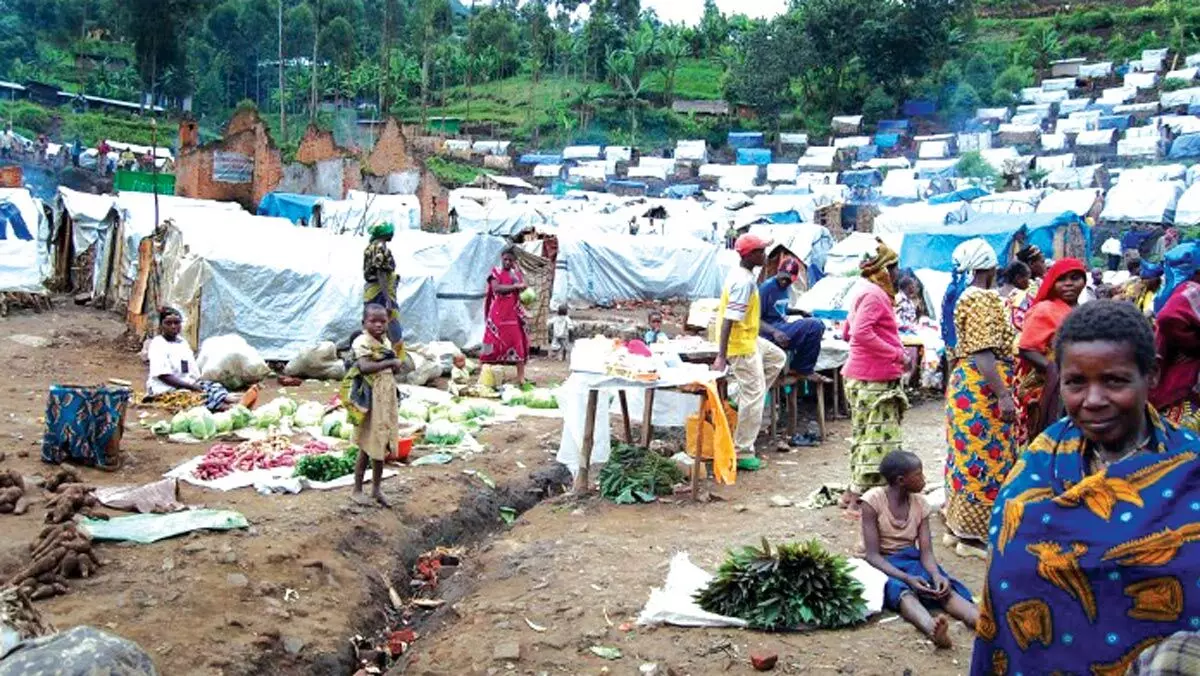- Home
- /
- Features/Spotlight
- /
- Addressing the ordeals...
Addressing the ordeals of IDPs through sustainable solutions

Affected by conflicts and disasters, millions of Nigerians have been forced to flee their homes, becoming Internally Displaced Persons (IDPs) and relying largely on humanitarian assistance and erratic government intervention to survive.
The United Nations High Commission for Refugees (UNHCR) puts the figure at over 3.5 million.
Nigeria’s north-east accounts for half of the displaced populations in the country, with over 304 camps and over 2,000 locations where IDPs live among host communities.
The UN says providing durable solutions remains a priority as it seeks to mitigate the challenge posed by IDPs in a world riddled with conflict spots.
UN Secretary-General Antonio Guterres has rolled out an action plan targeted at taking at least ten million people out of displacement across the globe, with Nigeria among the sixteen pilot countries.
Implementing Guterres’s action agenda, UNHCR Nigeria designed the Labondo Local Integration Pilot Project in Girei Local Government Area (LGA) of Adamawa State to provide durable and sustainable solutions to 454 households.
The 15 hectares of land provided by the Adamawa State government with the official agreement between Girei LGA and the UNHCR have 454 sustainable housing units with Water Sanitation and Hygiene (WASH) components.
It also has new and renovated blocks of classrooms, a health center, a market, and a community center.
In launching the Labondo settlement on June 27, Gov. Ahmadu Fintri of Adamawa expressed his satisfaction with the quality of housing and other projects put in place.
Fintiri applauded UNHCR for its role in bringing succor to the IDPs in Nigeria, pledging the support of the government for the sustainability of the project.
“Our people deserve the best, whether they are IDPs or not. I urge development partners to remain attuned to the needs of our communities.
“To the families benefiting, please ensure proper maintenance for lasting sustainability,” he said.
Ms. Chansa Kapaya, UNHCR Representative to Nigeria, said the project was designed to contribute to the Federal Government’s holistic approach to durable solutions for IDPs and refugees in Adamawa while addressing the needs of the host community and promoting social cohesion.
Kapaya said that the Labondo project will serve as a model that will be replicated nationwide to address the displacement situation in the country.
The UNHCR Country Representative said the project was funded to the tune of 2.5 million dollars from the Central Emergency Relief Fund (CERF), the Nigerian Humanitarian Fund (NHF), and UNHCR.
Kapaya described the facility as a new one that has restored hope and a future for the IDPs, who can now afford their own houses.
“The Labondo project embodies our shared commitment to sustainable solutions for displaced families.
“It’s not just about immediate relief but ensuring a transformative, sustainable impact.
“This initiative demonstrates the change we can foster when we pool our strengths, transitioning from managing crises to laying the foundations for a brighter, more sustainable future,” Kapaya said.
The initiative has received support from the state government and local authorities, as well as partner organizations.
In a bid to empower beneficiaries, they were also given access to farmland with essential tools and seeds.
The IDPs were also provided with agricultural extension services and microfinance training to aid them in kick-starting small businesses, thereby creating a sustainable source of income for their families.
Madawaki, Mohammed Baba Yahaya, the District Head Girei was excited by the project, adding that the community is accommodating and would do its best to assimilate their new members.
Yahaya emphasized the peaceful nature of his community and expressed expectations of harmony with the newly settled families.
“We pride ourselves on our peaceful coexistence here in Girei LGA, and we hope that our new brothers and sisters will help maintain this tranquility.
“We are grateful to UNHCR for their efforts, as their goodwill benefits not only the displaced persons but also our local community,” Yahaya said.
Already settling into their homes with smiles and joy that have no bounds, just like the other beneficiaries, 32-year-old Hauwa Abubakar, who fled when Boko Haram terrorists attacked her home in Michika, Adamawa state,
Hauwa said that she feels “born again”.
“I have begun a new life here, and I will not be returning to my ancestral village of Michika,” she added. “Going back would only intensify my trauma.”
The Labondo Local Integration Project epitomizes the transformative potential when different actors synergize their strengths, expertise, and resources.
This collaborative effort can alter the narrative of displacement, transitioning from mere crisis management to the construction of a brighter, more sustainable future.
By Lizzy Okoji



